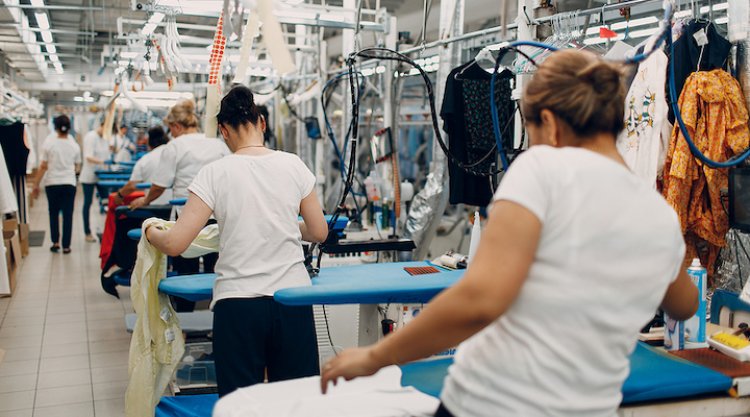Exposure of Work Conditions in Fashion Industry through UK Legal Action
UK Fashion Brand Raises Awareness of Unethical Work Practices with Unique Jumpsuit

Lawsuit, a brand based in the UK, has designed a custom jumpsuit as a form of protest against unethical work conditions prevalent in the fast-fashion industry. Crafted in Manchester, the "workwear couture" jumpsuit aims to shed light on the plight of garment workers in countries like Bangladesh.
Featuring 500 "worker SOS labels" sewn into its front-mid panels, the jumpsuit will be auctioned to raise funds for organizations dedicated to improving the working conditions of overseas garment workers.
Keith Gray, the creative director of Lawsuit, expressed the significance of this initiative, stating, "Unlike previous protests, our intention is to eliminate any ambiguity regarding the creators of these protest labels meant to give a voice to women working under deplorable conditions. This time, it is Lawsuit that has crafted these labels. The jumpsuit serves as a piece of art that seeks to provoke discussions about the treatment of workers within the fast-fashion industry."
Lawsuit recalls that in 2014, shoppers in South Wales discovered cryptic messages on labels sewn into the necklines of garments purchased from fast-fashion stores. These labels appeared to be pleas for help from the Bangladeshi women responsible for producing the clothing, revealing phrases such as "Forced to Work Exhausting Hours" and "Degrading Sweatshop Conditions."
Despite the fashion industry's staggering annual revenue of nearly $3 trillion, garment workers, predominantly women (accounting for 80% of the workforce), continue to receive poverty wages, often as little as AUD$131 per month.
Within the factories manufacturing clothing sold in the UK, long working hours, mandatory overtime, hazardous conditions, verbal and physical abuse, and even sexual harassment are distressingly common occurrences.

 chandni
chandni 



